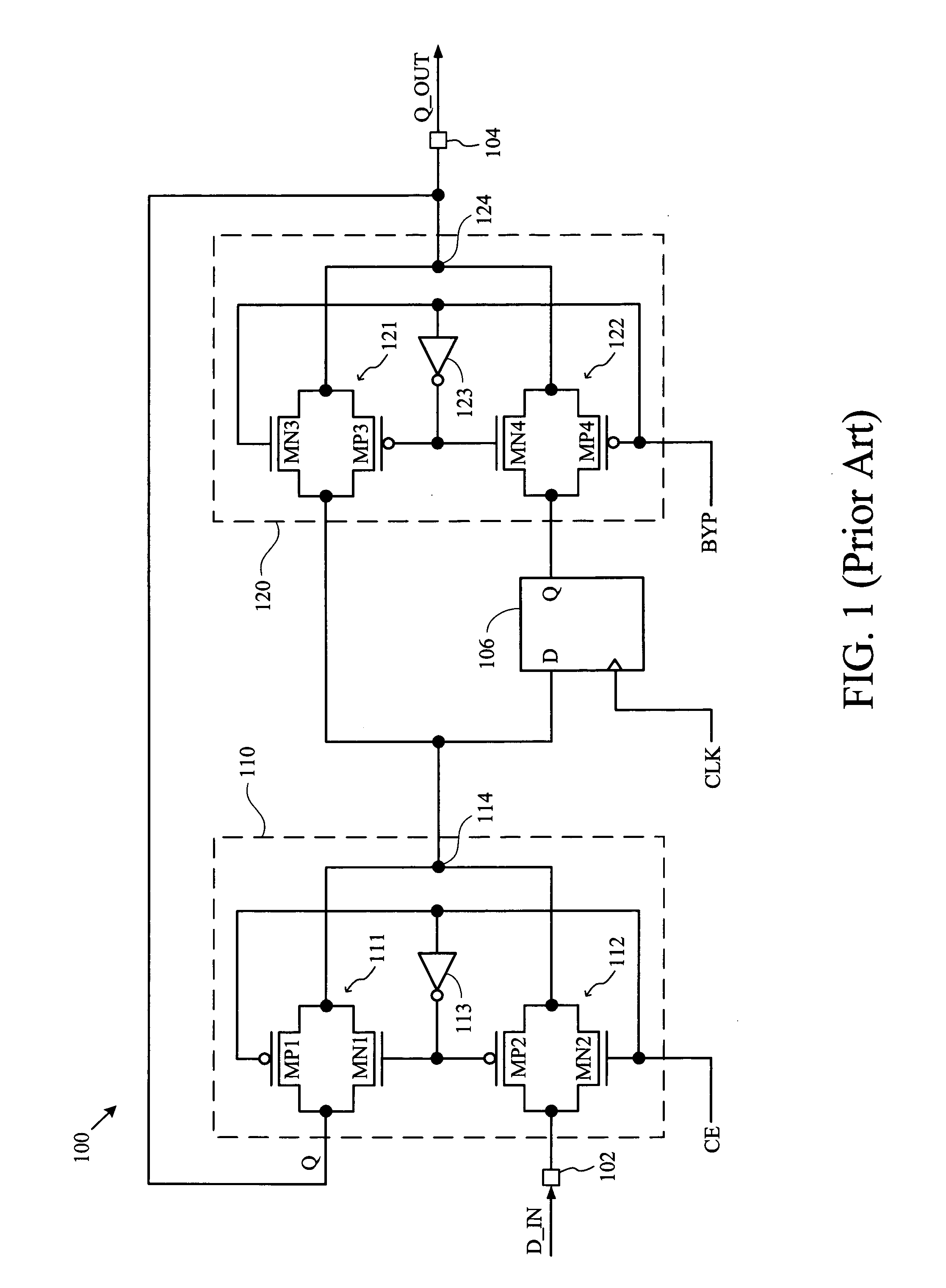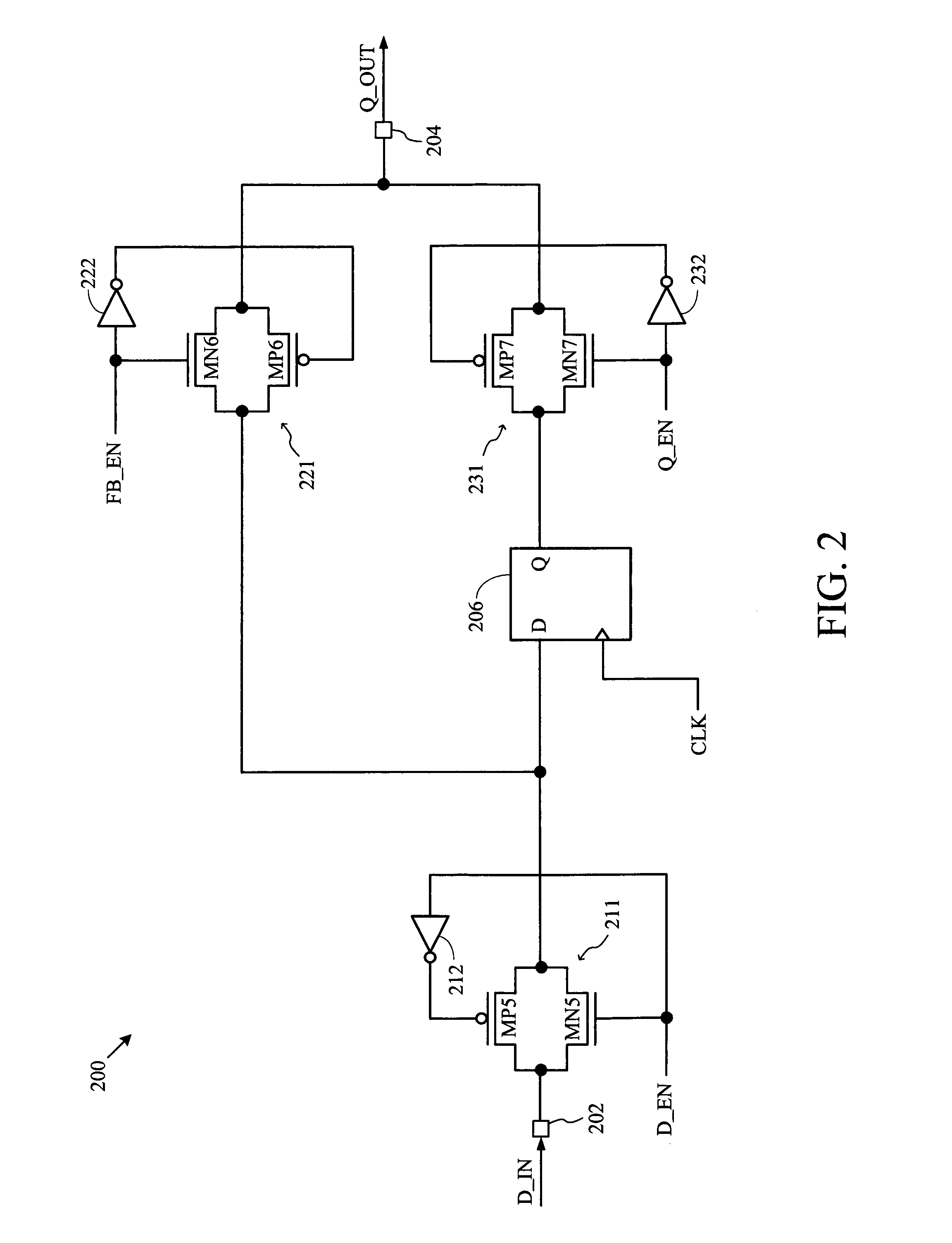Efficient implementation of a bypassable flip-flop with a clock enable
a flip-flop and clock enable technology, applied in the field of flip-flops, can solve the problems of unfavorable increase of signal propagation delay in the flip-flop, and achieve the effects of reducing the number of pass gates, reducing the capacitive load, and reducing the clock-to-out delay of the flip-flop
- Summary
- Abstract
- Description
- Claims
- Application Information
AI Technical Summary
Benefits of technology
Problems solved by technology
Method used
Image
Examples
Embodiment Construction
[0018]Embodiments of the present invention are applicable to a variety of integrated circuits and systems, and are particularly useful for devices requiring flip-flop circuits that include bypass and clock enable / disable features. In the following description, for purposes of explanation, specific nomenclature is set forth to provide a thorough understanding of the present invention. In other instances, well-known circuits and devices are shown in block diagram form to avoid obscuring the present invention unnecessarily. Further, the logic levels assigned to various signals in the description below are arbitrary, and thus may be modified (e.g., reversed polarity) as desired. Accordingly, the present invention is not to be construed as limited to specific examples described herein but rather includes within its scope all embodiments defined by the appended claims.
[0019]The present invention overcomes the aforementioned disadvantages of previously known flip-flop circuits by using com...
PUM
 Login to View More
Login to View More Abstract
Description
Claims
Application Information
 Login to View More
Login to View More - R&D
- Intellectual Property
- Life Sciences
- Materials
- Tech Scout
- Unparalleled Data Quality
- Higher Quality Content
- 60% Fewer Hallucinations
Browse by: Latest US Patents, China's latest patents, Technical Efficacy Thesaurus, Application Domain, Technology Topic, Popular Technical Reports.
© 2025 PatSnap. All rights reserved.Legal|Privacy policy|Modern Slavery Act Transparency Statement|Sitemap|About US| Contact US: help@patsnap.com



